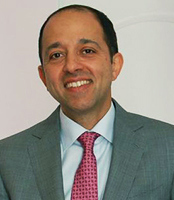 The U.S. Centers for Disease Control (CDC) estimate that nearly 30 million school-aged youths play organized sports each year.
The U.S. Centers for Disease Control (CDC) estimate that nearly 30 million school-aged youths play organized sports each year.
According to www.health.gov, participating in sports delivers myriad health, social, academic, and even employee benefits. These advantages don’t come without some risk, however. More than 3.5 million kids under age 14 receive medical treatment for sports injuries each year. High school-age athletes add 2 million injuries – half a million of them requiring doctor visits and 30,000 requiring hospital stays. The CDC says more than half of these injuries are preventable. Facial trauma is one category of injury. Maxillofacial injuries include any injury to the mouth, face, and jaw.
Recently, an increased level of concern has generated a groundswell of action among parents and youth sports organizations to take every possible precaution when it comes to protecting young athletes from a concussion, fractures, overuse injuries, and muscle or ligament tears and sprains. With cooperation among coaches, officials, parents, and young athletes themselves, strategies for safe play can be developed and implemented.
Here are nine strategies to ensure a safe sports season.
- Be zealous about safety issues; learn about the risks posed by the sport your child plays and take steps to exercise preventive measures where you can.
- Before the season begins, hold a team meeting with all the coaches, players, and their parents or guardians in attendance. Here, an approach to prevent injuries can be agreed upon. Officials can also be made aware of the strategies.
- Throughout the season, guide young athletes on ways to prevent injury: have a pre-participation physical by a doctor; always warm-up before practice and games with light jogging and stretching; incorporate strength training into fitness training regimes; be sure to use proper sport-specific form and technique in drills and gameplay.
- Prevent overuse injuries by encouraging athletes to take time off from playing only one sport. This break enables the body to heal and strengthen while providing an opportunity to develop skills learned in another sport.
- Instruct athletes not to play when they are hurt. They should tell their parents and coaches about injuries. Coaches should not allow injured athletes to compete.
- Coaches, parents, and athletes should not overlook or tolerate dirty play. Make certain referees call fouls on rule-breaking moves that can lead to injury.
- All coaches should be trained in first-aid and injury prevention. A first-aid kit should be available at all practices and games. Better yet, get certified. Learn first aid, CPR, AED use, and injury prevention skills. For facial injuries, if a person is unconscious, disoriented, nauseated, dizzy, or otherwise incapacitated, call 911 immediately. Do not attempt to move the individual yourself. If these symptoms are not present but the injury is severe or you are uncertain about its severity, take the person to the nearest hospital emergency room as quickly as possible.
- Many of us live in areas where the weather can change very suddenly. Don’t forget to establish a weather policy for the team. Study up on lightning and how to prevent being struck and make sure all involved know the team’s weather policy and will see that it is enforced. On hot, sunny days, be mindful of heat illness, heatstroke and dehydration. Consider canceling or postponing practice or games if the heat index is very high.
- Ensure your kids are playing on safe fields and with safety equipment. Before the game, have players pick up any litter on the field and look for rocky patches or holes in the ground that could cause a twist, sprain, or fracture. Goal structures should be anchored and emergency phones should be present.
For more information about facial injuries seehttp://emedicine.medscape.com/article/1284288-overview. For additional sports safety information visit www.safekids.org or www.momsteam.org.
 Kayvon Haghighi, DDS, MD, FACS is licensed to practice both medicine and dentistry in the state of New Jersey. Dr. Haghighi’s unique combination of surgical training and experience in facial reconstruction enables him to analyze your condition from multiple points of view.
Kayvon Haghighi, DDS, MD, FACS is licensed to practice both medicine and dentistry in the state of New Jersey. Dr. Haghighi’s unique combination of surgical training and experience in facial reconstruction enables him to analyze your condition from multiple points of view.
